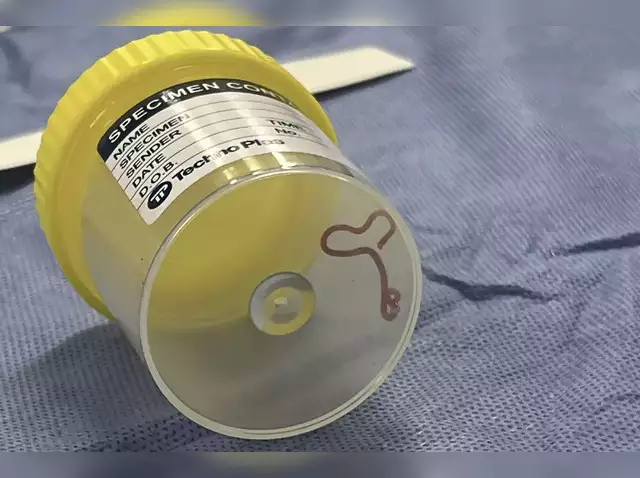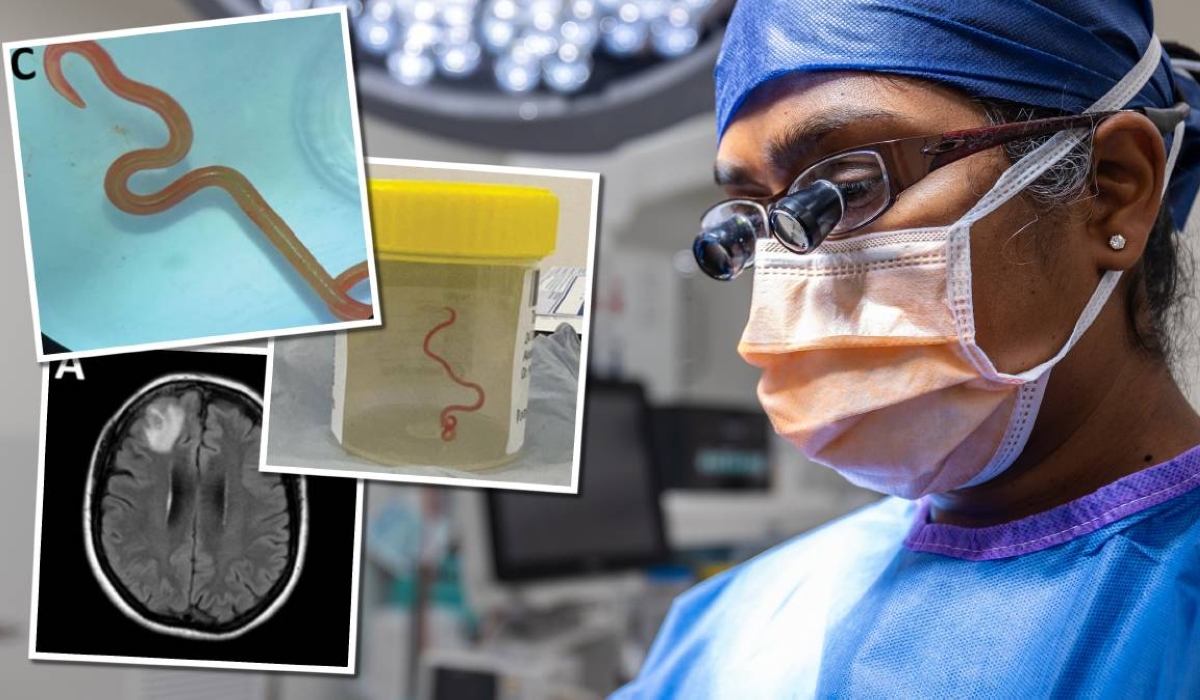A 64-year-old woman from Australia had a live parasitic worm inside her brain. This is the first time this kind of infection has been seen in humans. Doctors and researchers from the Australian National University and Canberra Hospital found a roundworm that was 8 cm long (around 3.15 inches) in the woman’s brain.
A rare incident has occurred where a roundworm known as Ophidascaris robertsi, which usually lives inside carpet pythons, was discovered in a person’s brain after they underwent surgery. The worm was found to be alive and moving. The woman also had worm larvae in her lungs and liver. This is the first time such a case has been seen in humans worldwide. Typically, these worm larvae are found in small animals that pythons eat, but this unusual case marks the first time they’ve been found in a mammal’s brain, including humans.
The researchers discovered that a woman likely got infected from a type of native grass called Warrigal greens. She collected these grasses near her home and cooked them. These grasses are a home for pythons, which release parasite eggs through their feces. The specific parasite is called Ophidascaris robertsi roundworm, and it’s commonly found in carpet pythons’ digestive systems. These roundworms are tough and can survive in many different places.

Tiny baby bugs
The scientists explain that the lady, who lives in the southeastern part of New South Wales, most likely got infected by touching the local grass or by eating it.
The woman had health issues starting in January 2021. Her symptoms got worse over three weeks, so she had to go to the hospital. She had stomach pain, diarrhea, fever, cough, and trouble breathing. Later on, it seemed that these issues happened because small worm larvae moved from her gut to other body parts like the liver and lungs. Doctors checked her respiratory samples and lung tissue, but didn’t find any parasites at that time. It was really hard to find these tiny larvae because they had never been seen in humans before.

In 2022, she started having memory problems and feeling very sad. Doctors did a special kind of scan called an MRI and found something strange in her brain. When a brain surgeon looked into it, they were surprised to find a worm. Experts who study parasites later confirmed that it was indeed a worm causing the problem.
Senanayake mentioned that this case highlights the increasing risk of diseases moving from animals to humans. Over the past 30 years, there have been around 30 new infections globally. About 75% of these new infections are zoonotic, which means they came from animals and were transmitted to humans. This even includes viruses like coronaviruses.
The current case of Ophidascaris infection cannot spread between people, so it won’t lead to a pandemic like SARS, COVID-19, or Ebola. However, both the snake and the parasite exist in other parts of the world, so it’s likely that similar cases might be identified in different countries in the years to come.
The woman, who was already dealing with pneumonia when she got infected with the worm, is still being watched closely by experts.

